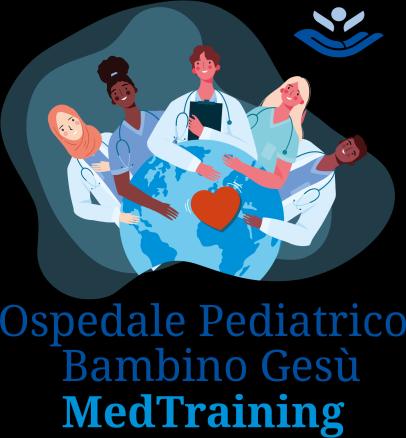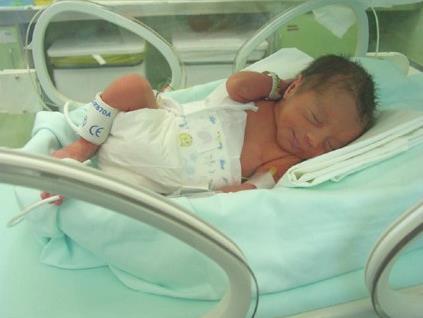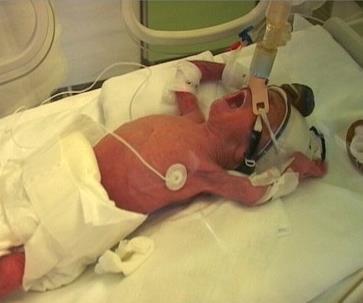Pain assessment in the newborn




Pain assessment in the newborn




• • • Pain assessment in the newborn 2
Prenatal life






• • • • • 3
Pain assessment in the newborn






4
• • • • • • •
Birth
Pain assessment in the newborn
Birth of a preterm and/or sick infant




5
Pain assessment in the newborn • • • • •
Painful procedures in the NICU









6
in the newborn • • • • • • • • • • •
Pain assessment




7
Pain assessment in the newborn • • • • • • •
Newborn care




8
Pain assessment in the newborn • • • • • •
Newborn care
Pain causes damage




9
• • • • • Pain assessment in the newborn
Aims of analgesia and sedation




10
• • • • • Pain assessment in the newborn
Pain assessment in the newborn




• • • • • • • 11
Pain assessment in the newborn
Behavioural changes




12
• • • • Pain assessment in the newborn
Facial expression






• • • • • • 13
Pain assessment in the newborn
What are the effects of pain?



• • • • • • • 14
• • • • Pain assessment in the newborn
Pain assessment in the newborn




Pain assessment in the newborn 15
Pain and analgesia assessment scales


Pain assessment in the newborn


16 • • • • •
Pain and analgesia assessment scales




• • • • 17 Pain assessment in the newborn
Pain and analgesia assessment scales
CRIES – CRYING, REQUIRES O2, INCREASED VITAL SIGNS, EXPRESSION, SLEEPLESS Indicator
Increased vital signs
Expression
Grimace is the most common facial expression associated with pain. It can be characterized by: lowered eyebrows, tightly closed eyes, deepened nasolabial furrow and open lips and mouth
0 – BF and AP ≤ as compared to preoperative levels
1 – BF and AP increased by less than 20% as compared to preoperative levels
2 – BF and AP increased by more than 20% as compared to preoperative levels

0 – None


1 – Grimace
1 – Frequent awakenings
Score >5 = moderate/severe pain → treatment
18
assessment in the newborn
Pain
Score
–
–
for
>
0 – No
– < 30% 2 – > 30%
Crying 0
No 1 – High-pitched 2
Inconsolable Requires O2
sat
95%
1
2 – Grimace/vocal sounds
Sleepless 0 – No
2 – Awake
Pain and analgesia assessment scales



19
Pain assessment in the newborn Score >5 = moderate/severe pain → treatment 0 = no pain 1 = moderate pain 2 = severe pain Crying No High-pitched Inconsolable O2 demand O2 sat. > 95% No < 30% > 30% Increased HR and AP No < 20% > 20% Espression None Grimace Grimace/ lament Insomnia No Frequent awakenings Constantly awake
Pain and analgesia assessment scales



Pain assessment in the newborn




20
Postoperative pain assessment in the newborn




21
Pain assessment in the newborn • • • •
Pain assessment in the newborn




• • • • 22 Pain assessment in the newborn
Pain and analgesia assessment scales

Indicator Score
Facial expression
0 – Relaxed (restful face, neutral expression)
1 – Grimace (tight facial muscles, furrowed brow, chin and jaw)
Cry
0 – No cry (quiet, not crying)
1 – Whimper (mild and intermittent moaning)
2 – Vigorous cry (loud, rising, shrill and continuous scream)
Breathing patterns
0 – Regular (usual pattern for this infant)
1 – Change in breathing (irregular, faster than usual, gasping, breath, holding)
Arms
0 – Relaxed, restrained (no muscular rigidity, occasional random arm movements)
1 – Flexed, extended (tense, straight, rigid arms and/or rapid flexion/extension)
Legs
0 – Relaxed, restrained (no muscular rigidity, occasional random leg movements)
1 – Flexed, extended (tense, straight, rigid legs and/or rapid flexion/extension)
State of arousal
0 – Sleeping-awake (quiet, peaceful, sleeping or awake and calm)


1 – Agitated (alert, restless, moving)
Score >5 = moderate/severe pain → treatment
23
assessment in the newborn
Pain
NIPS – NEONATAL INFANT PAIN SCALE
Pain and analgesia assessment scales



Pain assessment in the newborn




24
Pain and analgesia assessment scales



Pain assessment in the newborn




25
Pain and analgesia assessment scales


Pain assessment in the newborn



26
Pain and analgesia assessment scales



Pain assessment in the newborn




27
in the newborn
Pain and analgesia assessment scales
PIPP – PREMATURE INFANT PAIN PROFILE



28
assessment
Pain
Process Indicator Score Medical record data Gestational age 0 – ≥ 36 weeks 1 – 32-35 weeks, 6 days 2 – 28-31 weeks, 6 days 3 – < 28 weeks Observe the infant for 15 seconds Behavioral state 0 – Active/awake, eyes open, facial movements 1 – Calm/awake, eyes open, no facial movements 2 – Active/sleeping, eyes closed, facial movements 3 – Calm/sleeping, eyes closed, no movement Observe the baseline: HR and O2 Sat Maximum HR 0 – ↑ 0-4 bpm 1 – ↑ 5-14 bpm 2 – ↑ 15-24 bpm 3 – ↑ ≥ 25 bpm Minimum O2 Sat 0 – ↓ 0-2,4 % 1 – ↓ 2,5-4,9 % 2 – ↓ 5-7,4 % 3 – ↓ ≥ 7,5 % Observe the infant for 30 seconds Brow bulge 0 – Absent 1 – Minimum 2 – Moderate 3 – Massimum 0-9 % of the time 10-39 % of the time 40-69% of the time ≥ 70 % of the time Eye squeeze 0 – Absent 1 – Minimum 2 – Moderate 3 – Massimum 0-9 % of the time 10-39 % of the time 40-69% of the time ≥ 70 % of the time Naso-labial furrow 0 – Absent 1 – Minimum 2 – Moderate 3 – Massimum 0-9 % of the time 10-39 % of the time 40-69% of the time ≥ 70 % of the time Score >12 = moderate/severe pain → treatment
Pain and analgesia assessment scales



29
Pain assessment in the newborn
treatment MEDICAL RECORD DATA Indicator 0 = no pain 1 = moderate pain 2 = severe pain 3 = very severe pain GA 36 weeks 32-35 weeks 28-31 weeks <28 weeks Observation 15sec Behavioural state Active and awake: Eyes open Facial movements Quiet and awake: Half-closed eyes No facial movements Active and asleep: Eyes closed No facial movements Quiet and asleep: Eyes closed No facial movements Baseline observation HR O2 Sat. + + + + Osservazione 30sec HR Increase 0-5/min Increase 5-15/min Increase 15-25/min Increase >25/min O2 Sat. /min Reduction 0-2,5 % Reduction 2,5-5 % Reduction 5-7,5 % Reduction ≥7,5 % Furrowed brow Absent Minimum 11 sec Moderate 12-21 sec Maximum ≥21 sec Eyes tightly closed Absent Minimum 11 sec Moderate 12-21 sec Maximum ≥21 sec Deepened nasolabial furrow Absent Minimum 11 sec Moderate 12-21 sec Maximum ≥21 sec
Score >12 = moderate/severe pain →
Pain and analgesia assessment scales


Pain assessment in the newborn


30
• • •
Total score: ……
Score 6-10 → excessively sedated

Score 11-22 → adequately sedated





Score 23-30 → insufficiently sedated
Pain assessment in the newborn

31
Alertness Deeply asleep (eyes closed, no response to environmental stimuli) 1 Lightly asleep (eyes mostly closed, occasional responses to environmental stimuli) 2 Drowsy (child closes his/her eyes frequently, less responsive to environmental stimuli) 3 Awake and alert (child responsive to environmental stimuli) 4 Awake and agitated (exaggerated response to environmental stimuli) 5 Calmness/Agitation Calm (child appears serene and tranquil) 1 Slightly anxious (child shows mild anxiety) 2 Anxious (child looks agitated but controls him/herself) 3 Very anxious (child looks very agitated, barely able to control him/herself) 4 Panic (severe distress with loss of self-control) 5 Respiratory response (score only mechanically ventilated children) Absence of spontaneous breathing 1 Presence of spontaneous breaths 2 Restlessness or resistance to ventilator 3 Actively breathes against the ventilator or coughs regularly 4 Fights the ventilator 5 Crying (score only in spontanously breathing children) No crying 1 Occasional sobbing or moaning 2 Whining 3 Crying 4 Screaming or shrieking 5 Movements No movement 1 Occasional; 3 (or fewer) slight movements 2 Frequent (more than 3) slight movements 3 Vigorous movements limited to the extremities 4 Vigorous movements including trunk and head 5 Facial muscles Facial muscles totally relaxed 1 Normal facial tone 2 Evident tension of some facial muscles 3 Evident tension of all facial muscles 4 Evident grimacing 2 Muscle tone Muscles totally relaxed, no muscle tone 1 Reduced muscle tone, less resistance than normal 2 Normal muscle tone 3 Increased muscle tone with flexion of fingers and toes 4 Extreme muscle rigidity with flexion of fingers and toes 5
Non-pharmacological interventions for pain management in newborns



32 • • • • • • • :
Pain assessment in the newborn
Non-pharmacological interventions for pain management in newborns




33
• • • • Pain assessment in the newborn
Non-pharmacological interventions for pain management in newborns






• • 34 Pain assessment in the newborn
Non-pharmacological interventions for pain management in newborns






• • • • • 35 Pain assessment in the newborn
Non-pharmacological interventions for pain management in newborns


Holding
Non-nutritive sucking
Sugar solution
Breastfeeding
Wrapping
Sensory saturation


Gentle massage
Kangaroo
mother care
36 Pain assessment in the newborn
Future perspectives




37
• • • •
Pain assessment in the newborn
Art. 8 Chart on Children’s Rights Of Bambino Gesù Children’s Hospital



38
Pain assessment in the newborn
«All staff are dedicated to providing human support to children and their families to prevent the onset of pain, to minimize its perception and to implement all the necessary precautions to limit situations of fear, anxiety and stress.»






















































































































































































